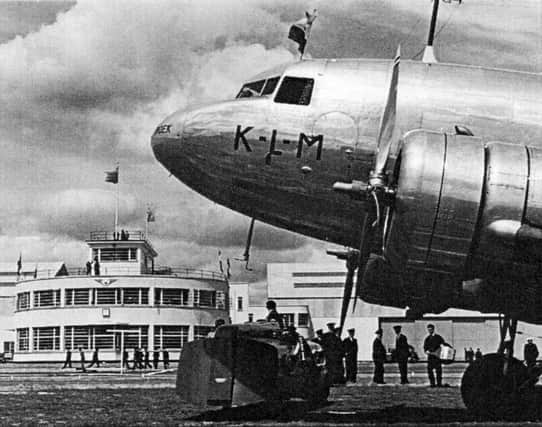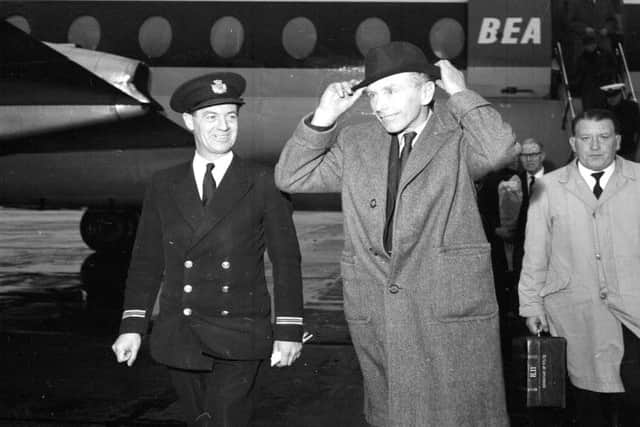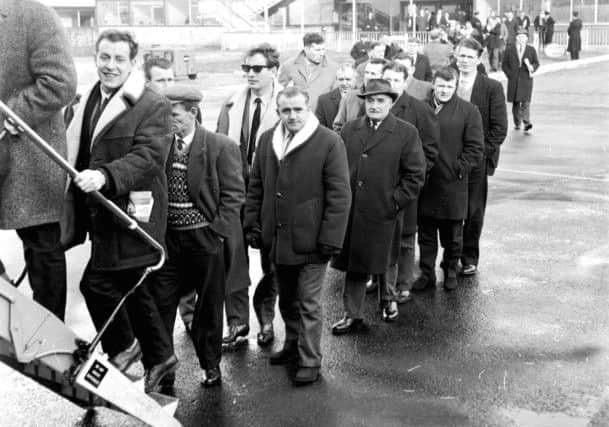Scots airports still flying high a century after opening


The capital had 927,200 passengers last month, while Glasgow recorded more than 660,000.
Advertisement
Hide AdAdvertisement
Hide AdGlasgow also created history as it exceeded 8.9 million passengers during a rolling 12-month period for the first time.


Edinburgh’s record came just weeks after it celebrated the 100th anniversary of its opening.
Although today an international passenger hub, the airport began life as a humble Royal Flying Corps aerodrome on March 2, 1916.
The facilities at Turnhouse, which was then a semi-rural part of Midlothian, consisted of nothing more than a hastily-assembled runway and a few nissen huts.
Advertisement
Hide AdAdvertisement
Hide AdIt was the most northerly aerodrome in the UK but played a key role in the country’s air defence at a time when planes were in their infancy.


It was renamed RAF Turnhouse in 1918.
Upon the outbreak of the Second World War, the aerodrome was taken over by RAF Fighter Command and a new concrete runway was laid to handle the new Supermarine Spitfire.
During the Battle of Britain, Turnhouse was home to No.3, 65, and 141 squadrons.
The airport remained under military ownership following the end of the war but commercial flights began in the late 1940s.
Advertisement
Hide AdAdvertisement
Hide Ad

The runway was extended in 1952 and a purpose-built passenger terminal opened in 1956.
The British Airports Authority (BAA) took over ownership of the airport on April 1, 1971. Initial stages of the redevelopment began two years later and the terminal building, designed by Sir Robert Matthew, was opened officially by Her Majesty the Queen on 27 May 1977.
BAA sold Edinburgh Airport to Global Infrastructure Partners in April 2012 and the airport has since experienced increasing growth with passenger traffic at Edinburgh Airport reaching a record level in 2015 with over 11.1 million passengers.


Other wartime airports have not survived.
A commercial aerodrome was built at Grangemouth, near Falkirk, in 1939 and would play a vital role in the air defence of Scotland when war broke out shortly after.
Advertisement
Hide AdAdvertisement
Hide AdIt was officially opened by Lord Trenchard, the ‘Father of the RAF’, but the outbreak of hostilities in September brought passenger flights to an end.
The military took over and Grangemouth was designated as a base for fighter aircraft given the task of defending against enemy bombers aiming for local iron works and dockyards.
When the fear of such bombing raids declined at the end of 1940, Grangemouth became a training centre where young pilots were introduced to the Spitfire and taught the skills of formation flying and gunnery and it remained in this role until near the end of the war.
Although originally built with passenger flights in mind, the airfield was closed in 1955 when the RAF pulled out.
Advertisement
Hide AdAdvertisement
Hide Ad

The site has since been built over but an impressive memorial to the 71 personnel based at Grangemouth who were killed in conflict or training exercises was unveiled in 2013.
A full-size replica of a Supermarine Spitfire was erected after years of fundraising by local volunteers.
The history of Glasgow airport is similar to Edinburgh, which is now its main commercial rival.
An RAF airfield was opened at Abbotsinch, near Paisley, in 1932 and was home to a variety of squadrons including Spitfires and Bomber Command.
Advertisement
Hide AdAdvertisement
Hide AdIn 1943, the site was handed over to the Royal Navy and renamed HMS Sanderling.
The site continued as a navy base until 1963 while the nearby Renfrew airport handled passenger traffic.
As the 1960s began, Glasgow Corporation decided a new commercial air hub was needed to meet growing demand.
It took control of HMS Sanderling and commissioned Sir Basil Spence to build a new passenger terminal.
Advertisement
Hide AdAdvertisement
Hide AdRenfrew airport, which boasted a fine art deco terminal building, closed in 1966 and has since been completely demolished.
The present M8 motorway runs over part of the site, which is now largely housing.
